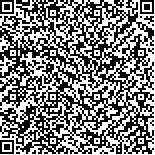马黎倩,王晓翔,张坤龙,等.电针对糖尿病神经痛模型大鼠脊髓背角p-ERK和p-CREB的影响[J].中华物理医学与康复杂志,2022,44(8):679-684
扫码阅读全文

|
| 电针对糖尿病神经痛模型大鼠脊髓背角p-ERK和p-CREB的影响 |
|
| |
| DOI:10.3760/cma.j.issn.0254-1424.2022.08.002 |
| 中文关键词: 电针 糖尿病神经痛 脊髓背角 磷酸化环磷酸腺苷反应元件结合蛋白 |
| 英文关键词: Electroacupuncture Acupuncture Diabetic neuralgia Spinal dorsal horns Phosphorylated cyclic adenosine monophosphate response element binding protein |
| 基金项目:国家自然科学基金(81804181,81774389);浙江省自然科学基金(LY22H270006);浙江省大学生创新创业训练计划(202010344015,S202110344037);浙江省大学生科技创新活动计划暨新苗人才计划(2020R410012) |
|
| 摘要点击次数: 4009 |
| 全文下载次数: 23275 |
| 中文摘要: |
| 目的 观察电针对糖尿病神经痛大鼠脊髓背角磷酸化细胞外信号调节蛋白激酶(p-ERK1/2)和磷酸化环磷酸腺苷反应元件结合蛋白(p-CREB)表达的影响。 方法 从30只健康雄性SD大鼠中随机选择8只作为正常组,其余22只采用单次大剂量腹腔注射链脲佐菌素法建立糖尿病神经痛模型,共16只大鼠造模成功,将其分为模型组和电针组,每组8只。电针组于链脲佐菌素注射后15 d开始电针干预,每日1次,每次30 min,干预1周,穴位选择双侧“后三里”和“昆仑”穴。链脲佐菌素注射前、注射后7 d、14 d、21 d,观察并记录大鼠的体重、空腹血糖、热痛阈变化,采用免疫印迹法检测大鼠脊髓背角p-ERK1/2和p-CREB表达,采用免疫荧光法检测p-CREB阳性细胞数与神经元共表达情况。 结果 链脲佐菌素注射后7 d、14 d、21 d,与正常组比较,模型组大鼠体重下降(P<0.05)、空腹血糖升高(P<0.015)。链脲佐菌素注射后7 d,与正常组比较,模型组大鼠热痛阈无显著变化;链脲佐菌素注射后14 d、21 d,模型组大鼠热痛阈下降(P<0.05)。与模型组比较,链脲佐菌素注射后21 d,电针组大鼠热痛阈显著升高(P<0.05)。免疫印迹结果显示,与正常组比较,模型组大鼠脊髓背角p-ERK1/2和p-CREB蛋白表达显著升高(P<0.05);与模型组比较,电针组大鼠脊髓背角p-ERK1/2和p-CREB蛋白表达显著降低(P<0.05)。免疫荧光结果显示,与正常组比较,模型组大鼠脊髓背角p-CREB阳性细胞数升高(P<0.05);与模型组比较,电针组大鼠脊髓背角p-CREB阳性细胞数降低(P<0.05);糖尿病神经痛模型大鼠脊髓背角p-CREB与神经元存在共表达。 结论 电针可有效缓解糖尿病神经痛,其机制可能与抑制大鼠脊髓背角p-ERK1/2和p-CREB的蛋白表达有关。 |
| 英文摘要: |
| Objective To observe any effect of electroacupuncture (EA) on the expression of phosphorylated extracellular signal-regulated protein kinase (p-ERK1/2) and phosphorylated cyclic adenosine monophosphate response element binding protein (p-CREB) in the spinal dorsal horns of diabetics experiencing neuropathic pain. Methods Eight rats were randomly selected from 30 healthy male Sprague-Dawley rats as the normal group (N), and the remaining twenty-two rats were treated with a single high-dose intraperitoneal injection of streptozotocin (STZ) to establish a neuropathic pain model. The rats modeled successfully were randomly divided into a model group (M, n=8) and an EA group (n=8). In the EA group, electroacupuncture was applied at the bilateral Hou san li and Kunlun acupoints starting on the 15th day after the STZ injection. The daily sessions lasted 30 minutes for 1 week. Body weight (BW), fasting blood glucose (FBG) and paw withdrawal latency (PWL) were observed before the STZ injection and on the 7th, 14th, and 21st days afterward. The expression of p-ERK1/2 and p-CREB in the dorsal horns of the rats′ spinal cords was detected using western blotting. The count of p-CREB-positive cells in the dorsal horns and their co-localization with neurons was detected using immunofluorescence. Results In comparison with the N group, the average BW of the M group on the 7th, 14th and 21st days after the STZ injection was significantly lower, while the average FBG was significantly higher. There was no significant difference between the M and N groups in the average PWL on the 7th day after the STZ injection, but it had decreased significantly in the M group on the 14th and 21st days. Compared with the M group, the average PWL of the EA group was significantly longer on the 21st day after the injection. The expression of p-ERK1/2 and p-CREB protein in the spines of the M group was significantly higher than in the N group. p-CREB positive cells were more numerous in the M group compared with the N group, while in the EA group they were fewer. P-CREB was co-located with neurons in the spinal dorsal horn. Conclusion EA can alleviate neuropathic pain effectively, perhaps by inhibiting the expression of p-ERK1/2 and p-CREB in the dorsal horns of the spinal cord. |
|
查看全文
查看/发表评论 下载PDF阅读器 |
| 关闭 |